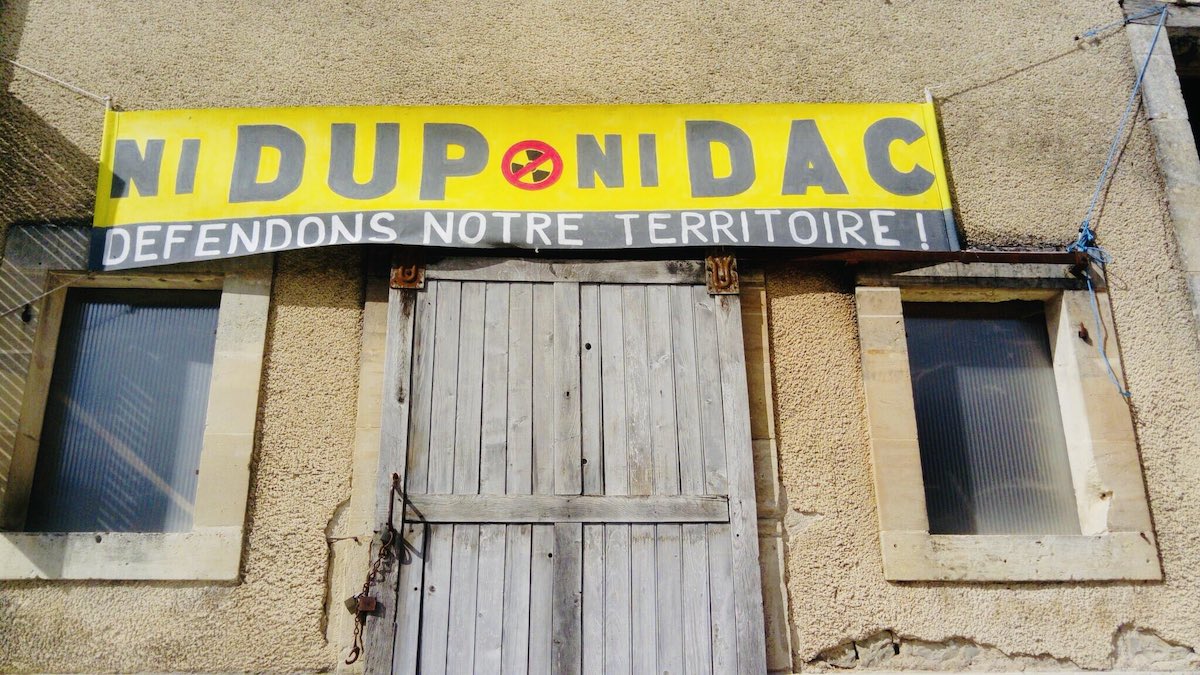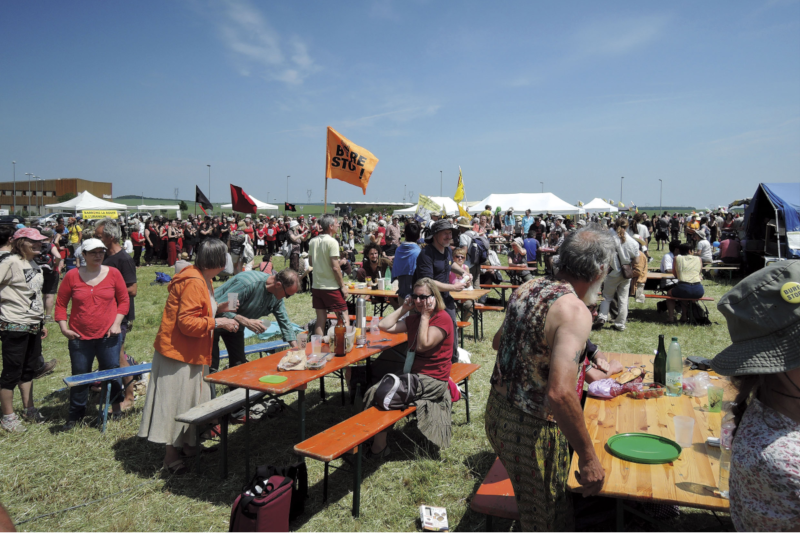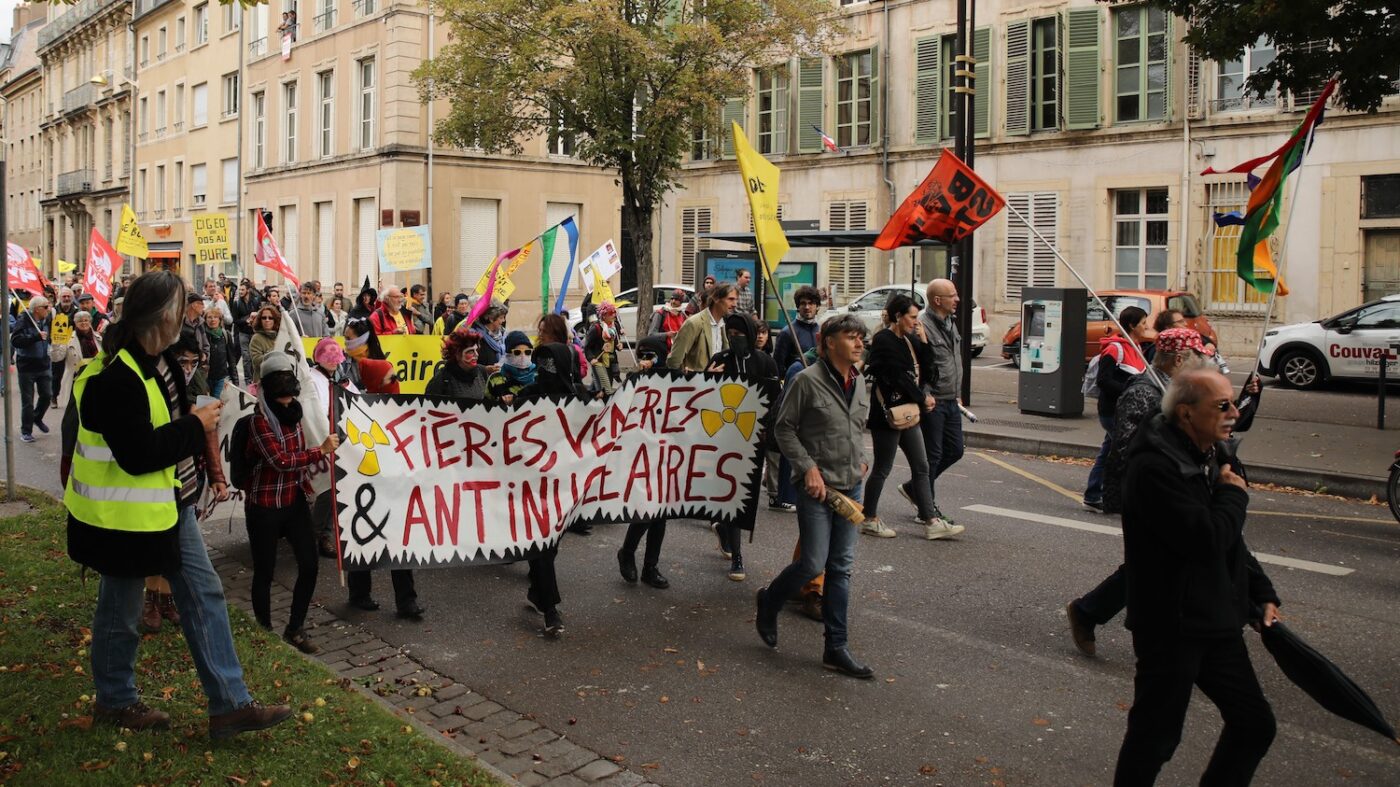Radioactive waste at Bure: the complacent green light of the public inquiry
Read on Reporterre (21/12/2021)

The investigating commissioners have given a favorable opinion on the declaration of public utility for the burial of radioactive waste. They swept aside the remarks of the public, which denounced a “partial” opinion which is “worrying for our democracy”.
This was a hard blow for the opponents of Cigéo. Their mobilization did not prevent the investigating commissioners from issuing an opinion in favor of the Declaration of Public Utility (DUP) for the radioactive waste burial project, with only five recommendations. This 43-page dithyrambic opinion (with 10,336 pages of appendices), posted on the Internet by the Meuse prefecture on Monday, December 20, follows the public inquiry that took place from September 15 to October 23 in the eleven towns [1] affected by Cigéo. The purpose of this consultation was nothing less than to “validate or not to validate” the project, explained the president of the inquiry commission, Claude Bastien, on September 14.
The conclusions and opinion of the commission of inquiry
As a reminder, the Cigéo project consists of burying some 83,000 cubic meters of the most dangerous nuclear waste ever produced by the nuclear industry 500 meters underground. Some of this waste will remain radioactive for hundreds of thousands of years. The commissioning of this facility, whose cost was set by decree at 25 billion euros in 2016, but then estimated at 34.5 billion euros by the National Agency for the Management of Radioactive Waste (Andra), is planned “by 2040”, recall the investigating commissioners. Its operational phase should last between 100 and 150 years.
“Ni DUP ni DAC” (untranslatable pun, meaning « neither duped, nor okay »): the appeal of the Bure à cuire, the Bure Stop association and the Collective against the radioactive waste burial (Cedra) against the public inquiry (DUP: declaration of public utility and DAC: request for authorization to create). Mandres-en-Barrois, 17 September. Cedra, on Twitter (@cedra_collectif)
The Declaration of Public Utility is a crucial step for ANDRA, which has been working on this project since the early 1990s: it must enable the State to acquire the last private plots of land necessary for the construction of this structure, by expropriating their owners if necessary. According to the notice, of the 665 hectares needed for the project, the agency still has to acquire “about 100 hectares” (p. 31): 20 hectares for the downhill area dedicated to receiving radioactive packages, 20 hectares for the link between the downhill area and the waste storage shaft area, and 60 hectares for the 14-kilometer private rail line intended to link the downhill area to the national rail line and to the private logistics platform at Gondrecourt-le-Château.
With this favorable opinion, the commission of inquiry rolls out the red carpet for the project and for Andra’s desire to expropriate. “After examining all the criteria for this DUP, the commission of inquiry considers that this project : takes into account an acceptable cost […]; will make it possible to provide a more reliable solution than storage, which moreover does not comply with the law; will contribute to the long-term safety of the radioactive waste already stored; is sufficiently mature to be undertaken in view of the storage capacities of the waste, which are close to saturation; could be interrupted if all the guarantees are not met in the course of the numerous stages still to be completed [… …]; can be reviewed thanks to reversibility according to scientific advances; and will have an acceptable impact on the environment and health,” the investigators list.
In 2016, activists walked 200,000 steps in Bure against nuclear waste. Collectif BureStop 55
The five recommendations they make are derisory: “Establish a prudent schedule of prior developments in the occurrence of obtaining authorizations, ensure a harmonious landscape insertion with the rural landscape, proceed with a gradual clearing of the Lejuc wood […] in order to preserve biodiversity as much as possible, maintain a visual screen […] to preserve the views from the surrounding villages and complete the communication to the public of its nearby territory and adapt it according to the operational phase of Cigéo.”
“The majority of the public is opposed to the project.”
Yet the opinions collected during the consultation are far less unanimous. 4,158 contributions were collected, including three petitions with 2,129 depositors. “On a purely accounting level, if we take into account the petitions, the public is mostly opposed to the project”, admit the commissioners. But these objections were brushed aside by the commission. “The subject of nuclear power was considered to be outside the scope of the inquiry, because the project concerned only the storage of radioactive waste, and not nuclear energy policy,” the investigators wrote. In the 43 pages, few paragraphs are devoted to the concerns and remarks of the participants.
« The public, on the one hand, has expressed its lack of confidence in the studies, in Andra’s knowledge of the subsoil, its distrust in the reliability of the process and in the understanding of the risks and the treatment of potential accidents,” the investigators simply note. Some doubt the effectiveness of the passive protection of the argillite and the memory of the existence of the center, on the multimillion-dollar scale of the loss of waste activity. Others, closer to everyday life, apprehend the incidental nuisances of the work, of road transport, of pollution, of the image of the sector. At the local level, and particularly on the part of the local authorities, the expressed opinions suggest a certain distrust of the explicit or implicit promises made in previous decades, and consequently of Andra. »
Also swept aside was the extremely critical opinion of the Environmental Authority, which in January 2021 questioned the foundations of the project. “The Environmental Authority has issued rigorous recommendations and has expressed a certain reservation about environmental damage and, above all, about overall safety, including the safety of the population, particularly in the event of accidents, which it considers insufficiently studied,” the commissioners said. Before considering that “the successive authorizations that will mark the life of the project will lead to a favorable reinforcement of the safety of the project.”
On the other hand, the commissioners are at pains to present the opponents of the project as a minority. The rejection of Cigéo is explained, according to them, mainly by the length of its implementation. “The project […] is peppered with numerous meetings, communications, various administrative and civil events, but which give an impression for those who live it from the outside, of weariness, of unfulfilled expectations of a start. And this weariness, combined with the recurrent demonstrations of sometimes violent opponents, has discredited the project and its designer, Andra, in the eyes of the local population and their elected representatives, especially those closest to the site », they write. « What could pass for procrastination, and which is merely an ordinary, cautious administrative process for a grandiose project, is generating a feeling of local rejection of the project that has been expressed through the opinions of certain local authorities ». They then rely on “the studies cited by Andra” – whose references are not given in the document – which would highlight a “trend of acceptance or non-rejection by two-thirds of the population.”
This opinion did not fail to make the opponents react. “The Coordination Cigéo/Bure Stop protests against this complacent green light to the public utility for the most risky, costly and controversial project of the century. The report and conclusions of the public inquiry commission that have just been published are very worrying for our democracy – what about the many reservations and oppositions expressed? – and for the future of our territory“, warned the associations in a press release issued late Monday afternoon, December 20. “Is the commission of inquiry aware of the absurdity of its opinion: favourable, but one day it will have to be proven that Cigéo will be safe?” they said, referring to the passage in which the commission declares a favourable opinion on the project even if it “must continue to be improved in order to guarantee maximum safety, in the short, medium and long term“.
Between 1,300 people (according to the prefect) and 3,000 people (according to activists) participated in this September 2019 demonstration in Nancy (Meurthe-et-Moselle), a highlight of the Vent de Bure movement.
« Since the Law of 2006, endorsing the project, history repeats itself: despite the consultations, public debates, public inquiries that follow one another, despite all the expertise deployed by associations or independent people, nothing seems to be able to thwart the process. This is one of the reasons why we decided not to participate in the public inquiry. But by issuing an unqualified opinion, the commission of inquiry did not even try to drape its complacency towards Andra and the government with a hint of taking into account the opinions expressed by the people, they denounced again. The commission has succumbed to Andra’s tricks to the point of becoming its spokesperson: everything is there, vocabulary, arrogance, absolute confidence. If the scope of this opinion is not binding, it is biased and deceives the public. »
As soon as the consultation was announced, opponents had denounced a “big DUPery” and expressed their refusal to participate. In particular, they prevented on September 17 an information meeting organized by Andra from taking place. The Coordination Cigéo/Bure Stop has already promised that “we will not fail to legally attack” the Decree of Public Utility.
Notes
[1] The towns concerned by the project are Bonnet, Bure, Gondrecourt-le-Château, Horville-en-Ornois, Houdelaincourt, Mandres-en-Barrois, Montiers-sur-Saulx, Ribeaucourt and Saint-Joire in the Meuse, and Saudron, Gillaume and Cirfontaines-en-Ornois in Haute-Marne.
02/01/2022
Et sinon, 6 jours avant
on écrivait ça.
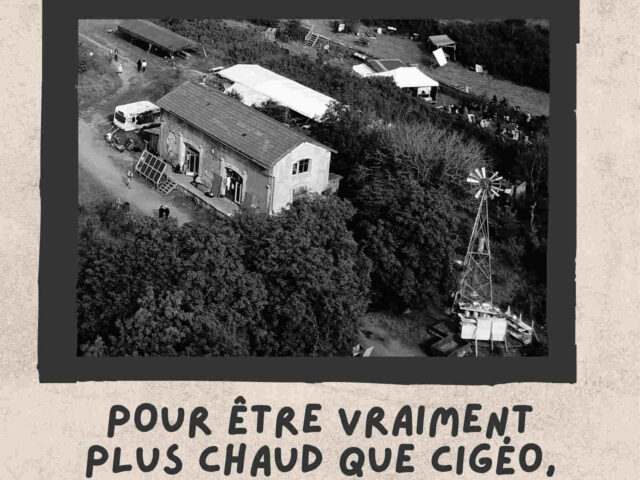
*1-7 February* Construction works week at the o...
Do not hesitate to fill in the pre-registration form (not compulsory). Why a worksite at “the Station”? The Luméville train station is a strategic place in the struggle against the nucl... Lire la suite
27/12/2021
Et sinon, 2 jours après
on écrivait ça.
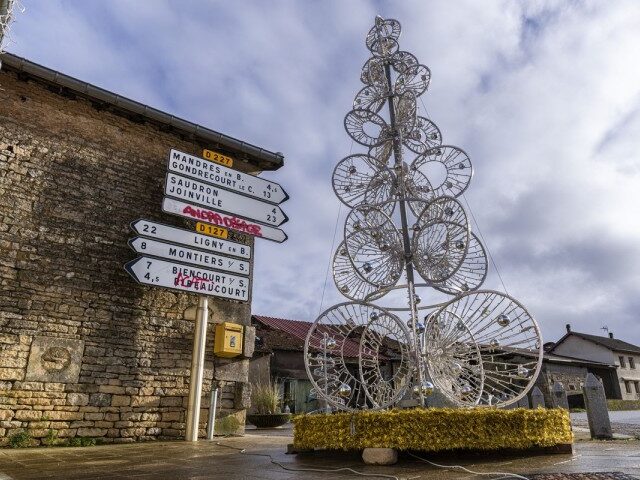
Nuclear waste: Macron did not make any concessi...
Read on Reporterre (04/01/2022) In more than thirty years, the struggle against the project of a nuclear waste burial center in the south of the Meuse has never been so complicated. Macron and his ... Lire la suite
